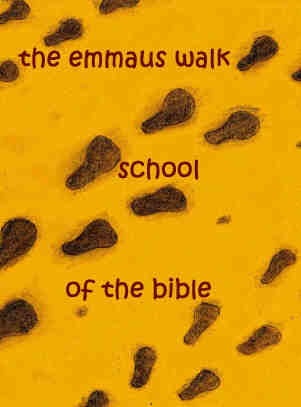
THE EMMAUS WALK PRESENTS:
"ATLAS AND COMMENTARY ON:
Asia Minor," by Ronald Ginther

Asia Minor, which is now the "secular" but all the same Moslem-dominated Anatolia of Turkey, was the first Christian land along with Armenia, and flourished as a Christian land for a thousand years until the conquest by the Turks in 1453, when they took the city of Constantinople from the defending Byzantines, effectivelty ending the Christian Byzantine empire. Paul's chief works of ministry were first accomplished here, with the assistance of Barnabus and also Mark and Timothy. Asia Minor contains almost countless ruins of the Christian era. The Church of Hagia Sophia, the main edifice of the Byzantines, still stands intact in Istanbul, formerly called Constantinople. Built by Emperor Justinian in the 6th century, it was the largest church of Christendom until St. Peter's in Rome was constructed. The Ottoman Turkish Sultan, Mehmet in the 15th century, converted it to a mosque, but in the 20th century it was officially re-established as a museum instead, with no more Moslem rites being conducted there though some Moslem Kuffic religious inscriptions on huge shields still hang there (what the inscripions say probably promote the Moslem teachings, that "Allah is One God," and "Mohammed is his prophet"). It is a major tourist sight in the world today, and is still considered the mother church by the Greek Orthodox world. The Greek Orthodox head, the Patriarch of Constantinople, still resides in the city, as a Turkish citizen, maintaining a church and office for the patriarchate that goes back over a thousand years to the earliest times of Christian faith in Asia Minor. Some of the church's ancient Christian frescos have been found when plaster was removed, and the frescos are still very beautiful. The ancient stained glass in the windows has also survived in many windows high up in the building. Much of the building is largely what it was under the Byzantines, though sadly deprived of the glorious aspect it had back then. Even so, it remains a stunning sight because of its enormous dome and the huge open space beneath it, along with the dozens of fine marble pillars, many of which were brought there from all parts of Justinian's empire, taken from pagan temples to embelish the church.
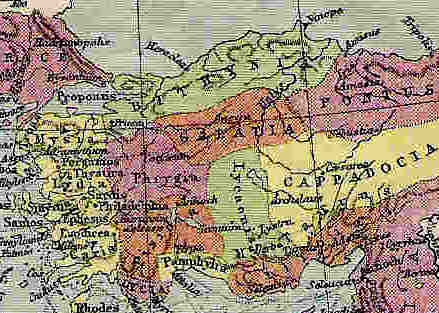
Alexandria Troas--the important seaport and town on the Aegean Coast of Asia Minor where the Apostle Paul ministered, resided, and sailed from to carry the Gospel to Macedonia and other lands. It is located in Mysia, the old provincial name, and the area is called the Troad, after ancient Troy. The site of Troy is located nearby, about five miles inland on the hill known today as Hissarlik, a famous name in archeology because there in the latter years of the 19th century the German-American archeologist, Heinrich Schleimann discovered the walls and ruins of ancient Troy of Homer's Iliad. Until his disovery most scholars believed that Troy was only a literary invention and not a real place. They also claimed this was the case with Hittites mentioned in the Bible, until the Hittite civilization's ruined cities were found in Turkey.
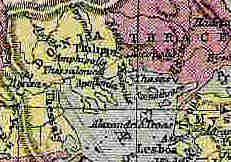
A fresco of Christ and his mother, newly discovered in 1968 in Nicaea (modern Iznik, Turkey), in a ruined church, just above the floor level of the church destroyed in the Greek-Turkish war. The savage war was fought in the early twenties of the last century; the resident Greek population and the Greek armies were all driven out, and the Turkish nation was firmly established in the first years after the collapse of the Ottoman Empire at the close of World War I. The picture was taken by Ronald Ginther on a tour in 1968.
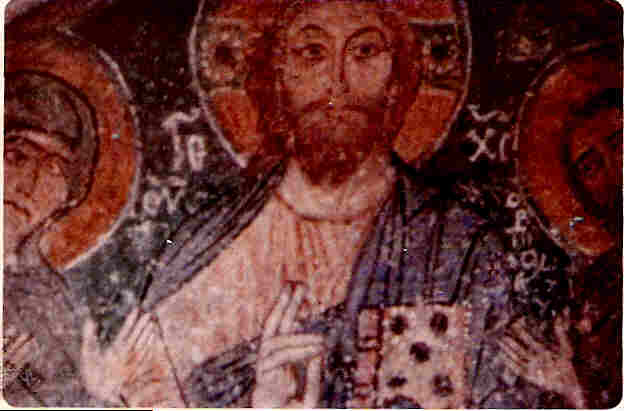
The Temple of Diana, the largest temple in the Greek world, reposed at Ephesus, chief city of Asia Minor, located on the coast of the Aegean Sea. This temple was burned and destroyed several times by various madmen seeking fame for the deed. Paul saw it on his visits and stays in the city. The temple was dedicated to Diana, a mother goddess of the pagan religion, and in protection of its trade in idols Paul was nearly lynched by a mob (the account is fully given in Acts). Scarcely a stone of the magnificent temple survives today on the original site. A nearby mosque (also in ruins) contains pillars, it was said to Ronald Ginther on tour, of the temple. This pillar may have been one taken from the temple to embelish the mosque, when it was built sometime after the 7th century by conquering Moslems.
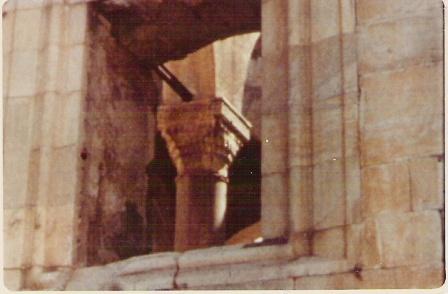
The amazingly pure blue Lake of Nicaea, in modern Turkey. Niceaa, the important city on the shore, was a venue for the earliest church councils, from which came the Nicaean Creed. The Roman Emperor Constantine called the councils to bring unity to Christianity and its doctrines, for he wanted to deal with the many sects and heresies that were dividing Christianity, not to mention his empire.
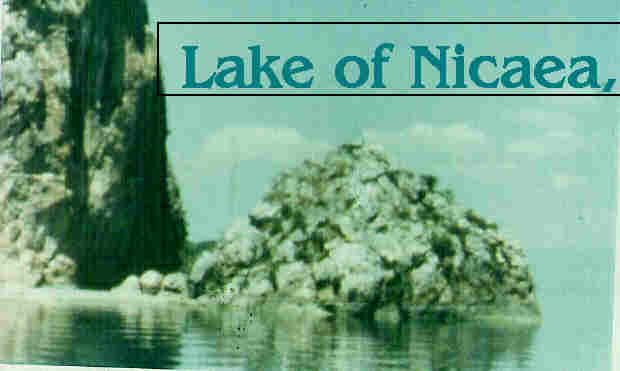
The walls of the Byzantine city of Nicaea were three miles in circumference. They were largely intact until the 20th century, but were ravaged in the Greek-Turkish war. Turkish Iznik was a poor village in the ruins of the much larger, wealthy, and cosmopolitan city of Nicaea. Nicaea, in its heydey, was the capital of the Byzantine Empire where Byzantine rulers found refuge until they could find forces strong enough to retake Constantinople their original capital from the Latins. In the 13th century, the Franks (called Latins by the Byzantines) captured it in a crusade led by Venice. It originally held many monasteries and no doubt palaces and mansions, but very little of them survives. The churches are all in ruins. Earthquakes have done extensive damage in addition. A few fine mosques going back to the time of Columbus are covered with the famous Iznik blue tiles and appear like new today. The Iznik pottery was famous for a long time, but no longer operates. The village has grown to a a small town since 1968 when the picture of the walls was taken. Iznik takes advantage of the lush vineyards of the area, the extensive olive groves, the local archeological museum, the ancient ruins of the city and the great walls, and the tourist traffic attracted to its historic sights and also the pristine blue lake. It well worth a tour due to these many reasons because of the great natural beauty, the charming people, and the great historical and religious meaning for Christians.
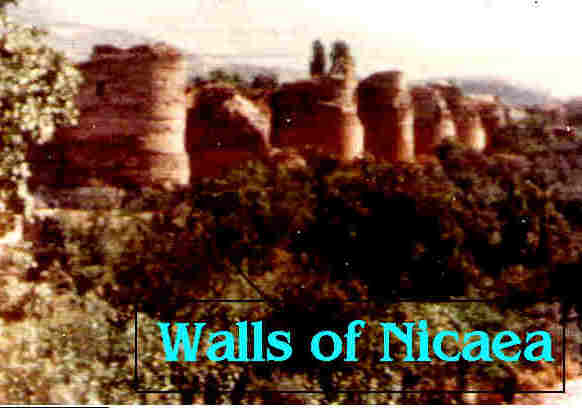
Paul's travels, his missionary journeys, carried him from Israel to Asia Minor, and from there to Macedonia, and to Greece, and thence to Rome. Cyprus, Malta, and Crete were also visited and ministered in by Paul. Spain is thought to be another place he visited. He may even have reached Britain, not to mention, France (Gaul, for he had at least two years to pay a missionary call to Spain, Britain, and Gaul before he was executed in Rome. Those lands were well-known to soldiers and mechants of the time, so it was no problem finding a ship that would take a traveler to them. Spain was a part of the empire, while Britain would await the conquest of Emperor Claudius. Gaul was conquered by Julius Caesar, so it too, like Spain, was an imperial province, wtih all the seaports, roads and inns, maps, and other means of travel available.
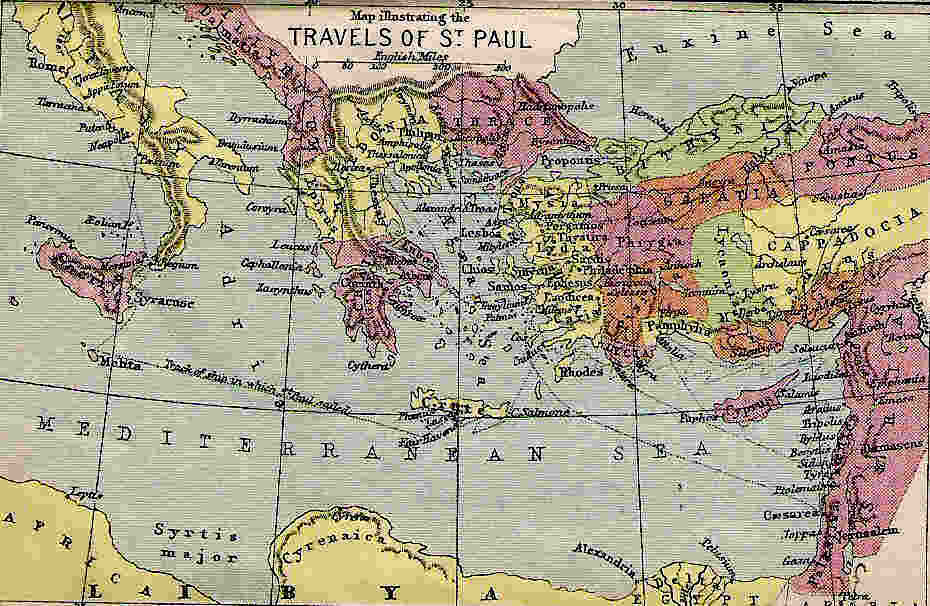


(c) 2007, Butterfly Productions, All Rights Reserved














